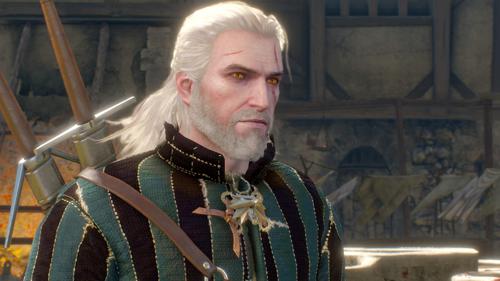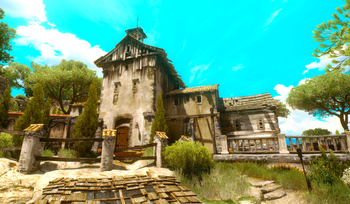001 The Slyzard Matriarch
Synopsis:
Character Series: no character series
Group Series: Second Chronicles of Caer Norren, 1
Genre: Fantasy
Author: Adriana Pausenwein
Physics is the that studies , its , its and behavior through , and the related entities of and . Physics is one of the most fundamental disciplines, and its main goal is to understand how the behaves.
Physics is one of the oldest and, through its inclusion of , perhaps the oldest. Over much of the past two millennia, physics, , , and certain branches of were a part of , but during the in the 17th century these natural sciences emerged as unique research endeavors in their own right. Physics intersects with many areas of research, such as and , and the boundaries of physics are not . New ideas in physics often explain the fundamental mechanisms studied by other and suggest new avenues of research in these and other academic disciplines such as mathematics and .
Advances in physics often enable advances in new . For example, advances in the understanding of , , and led directly to the development of new products that have dramatically transformed modern-day society, such as , , , and ; advances in led to the development of ; and advances in inspired the development of .
History
Main article:
The word "physics" comes from : φυσική (ἐπιστήμη), : physikḗ (epistḗmē), meaning "knowledge of nature".
Ancient astronomy
Main article:
Ancient is evident in monuments like the from the .
is one of the oldest . Early civilizations dating back before 3000 BCE, such as the , , and the , had a predictive knowledge and a basic awareness of the motions of the Sun, Moon, and stars. The stars and planets, believed to represent gods, were often worshipped. While the explanations for the observed positions of the stars were often unscientific and lacking in evidence, these early observations laid the foundation for later astronomy, as the stars were found to traverse across the sky, which however did not explain the positions of the .
1
According to , the origins of astronomy can be found in , and all Western efforts in the are descended from late . left monuments showing knowledge of the constellations and the motions of the celestial bodies, while Greek poet wrote of various celestial objects in his and ; later provided names, which are still used today, for most constellations visible from the .
2
Natural philosophy
Main article:
has its origins in during the (650 BCE – 480 BCE), when like rejected explanations for natural phenomena and proclaimed that every event had a natural cause. They proposed ideas verified by reason and observation, and many of their hypotheses proved successful in experiment; for example, was found to be correct approximately 2000 years after it was proposed by and his pupil .
3
Medieval European and Islamic
Main articles: and
The fell in the fifth century, and this resulted in a decline in intellectual pursuits in the western part of Europe. By contrast, the (also known as the ) resisted the attacks from the barbarians, and continued to advance various fields of learning, including physics.
In the sixth century, Isidore of Miletus created an important compilation of Archimedes’ works that are copied in the .
(c. 965–c. 1040), Book of Optics Book I, [6.85], [6.86]. Book II, [3.80] describes his camera obscura experiments.
In sixth-century Europe , a Byzantine scholar, questioned ’s teaching of physics and noted its flaws. He introduced the . Aristotle’s physics was not scrutinized until Philoponus appeared; unlike Aristotle, who based his physics on verbal argument, Philoponus relied on observation. On Aristotle’s physics Philoponus wrote:
But this is completely erroneous, and our view may be corroborated by actual observation more effectively than by any sort of verbal argument. For if you let fall from the same height two weights of which one is many times as heavy as the other, you will see that the ratio of the times required for the motion does not depend on the ratio of the weights, but that the difference in time is a very small one. And so, if the difference in the weights is not considerable, that is, of one is, let us say, double the other, there will be no difference, or else an imperceptible difference, in time, though the difference in weight is by no means negligible, with one body weighing twice as much as the other
Philoponus’ criticism of Aristotelian principles of physics served as an inspiration for ten centuries later, during the . Galileo cited Philoponus substantially in his works when arguing that Aristotelian physics was flawed. In the 1300s , a teacher in the faculty of arts at the University of Paris, developed the concept of impetus. It was a step toward the modern ideas of inertia and momentum.
4
inherited from the Greeks and during the developed it further, especially placing emphasis on observation and a priori reasoning, developing early forms of the .
The basic way a pinhole camera works
The most notable innovations were in the field of optics and vision, which came from the works of many scientists like , , , and . The most notable work was (also known as Kitāb al-Manāẓir), written by Ibn al-Haytham, in which he conclusively disproved the ancient Greek idea about vision, but also came up with a new theory. In the book, he presented a study of the phenomenon of the (his thousand-year-old version of the ) and delved further into the way the eye itself works. Using dissections and the knowledge of previous scholars, he was able to begin to explain how light enters the eye. He asserted that the light ray is focused, but the actual explanation of how light projected to the back of the eye had to wait until 1604. His Treatise on Light explained the camera obscura, hundreds of years before the modern development of photography.
The seven-volume Book of Optics (Kitab al-Manathir) hugely influenced thinking across disciplines from the theory of visual to the nature of in medieval art, in both the East and the West, for more than 600 years. Many later European scholars and fellow polymaths, from and to , and , were in his debt. Indeed, the influence of Ibn al-Haytham’s Optics ranks alongside that of Newton’s work of the same title, published 700 years later.
The translation of The Book of Optics had a huge impact on Europe. From it, later European scholars were able to build devices that replicated those Ibn al-Haytham had built, and understand the way light works. From this, important inventions such as eyeglasses, magnifying glasses, telescopes, and cameras were developed.


